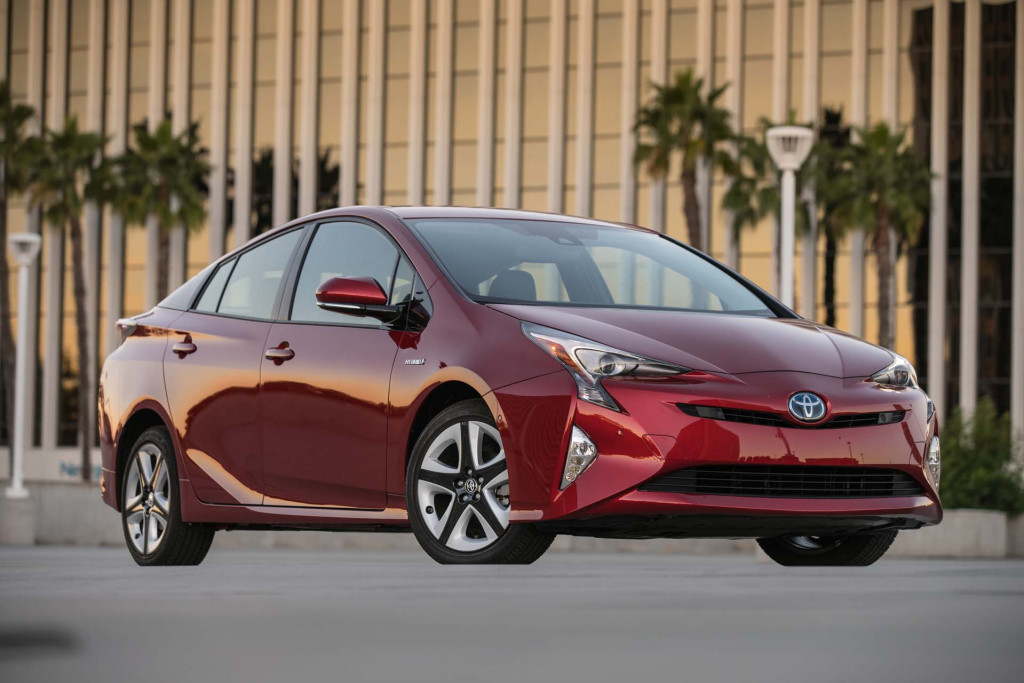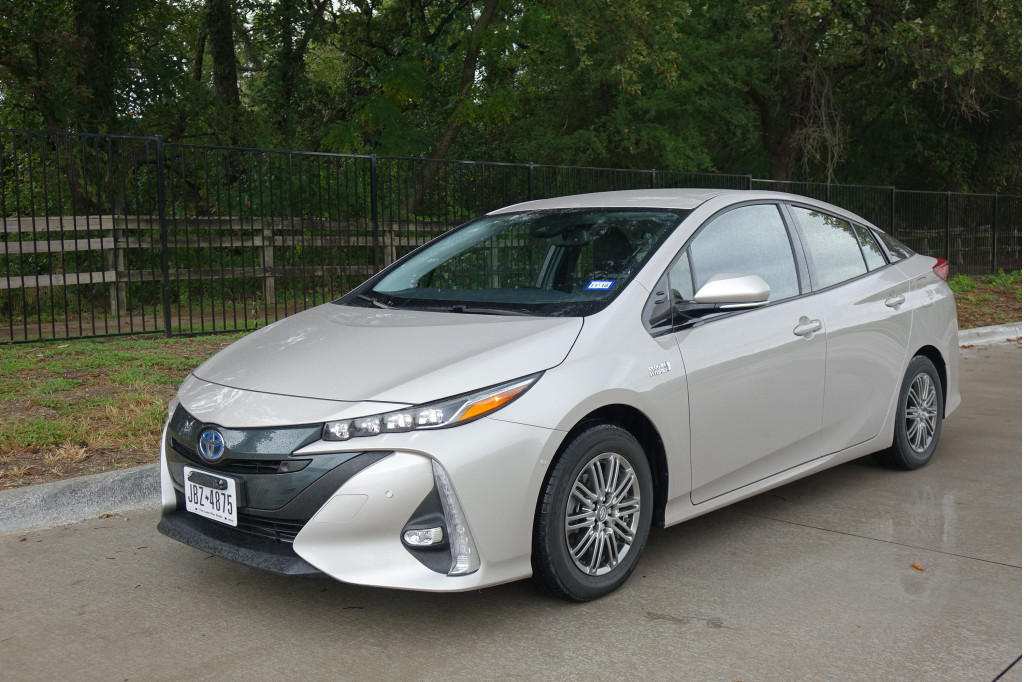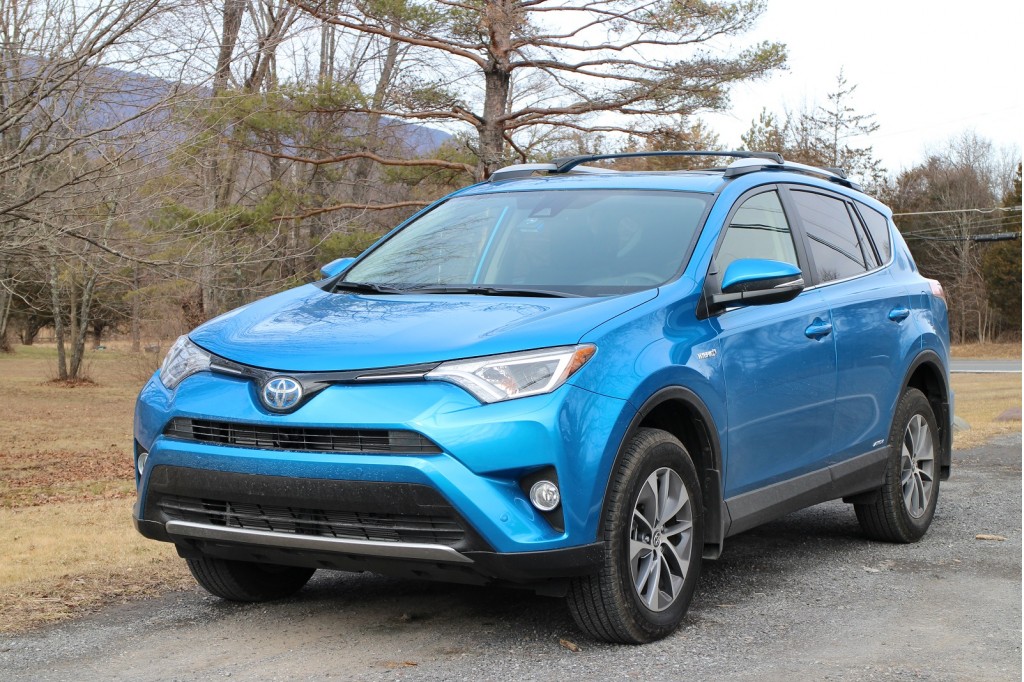The Toyota Prius hybrid has been its maker's "halo car" and an example of its most advanced technology for two decades.
Launched from an early-1990s project to halve the fuel consumption of a small car, its hybrid-electric powertrain pioneered mass electrification of passenger cars.
But the sales arc of what has grown to be a family of Prius hybrid models in the U.S. has now turned sharply down: Last year's sales were half those of 2012.
DON'T MISS: 2017 Toyota Prius Prime: first drive of new plug-in hybrid
Prius sales in 2000, its first model year, were just 5,562 units, and the subcompact four-door sedan competed only with the tiny, two-seat Honda Insight mild hybrid hatchback.
Neither car made much of an impression, but the second-generation Prius for 2004 launched into a gas-price spike, and its high fuel efficiency struck a chord among buyers.
Deliveries of what had become a Prius hatchback grew from 54,000 that year to 140,000 by 2009, its last model year.

2017 Toyota Prius V
The third generation, launched for 2010, was intended to have a lithium-ion battery, but didn't. Sales stayed around 140,000 for two more years.
In 2012, three new Prius models were added to what was dubbed the Liftback: they were the Prius C subcompact hatchback, the Prius V tall wagon, and the Prius Plug-In Hybrid with its 11 miles of EPA-rated range.
Sales that year soared to 236,655, still the all-time U.S. record. By 2015, the last year of the third-generation car, they had fallen to 185,000 across all four models.
READ THIS: Toyota Prius V hybrid wagon ends U.S. run; RAV4 Hybrid took its sales
A fourth-generation Liftback arrived for 2016, but the slide continued despite growing sales of the Prius Prime plug-in hybrid launched last year. For 2018, the Prius V has been withdrawn from the lineup.
Last year, just 108,661 Priuses of all four models were sold, almost exactly half the peak sales in 2012.
We can see four reasons for the rise and fall of the Toyota Prius in the U.S.

2018 Toyota Prius

2018 Toyota Prius C

2017 Toyota Prius Prime, Dallas, Texas
First, gasoline is cheap in the U.S. and it's stayed that way for roughly four years. Cheap gas means fuel economy is less important in swinging the choice of a new car.
Second, seven years of rising corporate average fuel economy standards have boosted gas-mileage in every new vehicle, including formerly thirsty utility vehicles—some of whose ratings now equal those of compact cars 10 years ago.
Third, hybrid cars are now available from multiple makers and even the Prius is no longer considered cutting-edge advanced technology. That role has been taken over by plug-in electric cars.
CHECK OUT: What is a Toyota Prius Hellcat? You may not want to know
Fourth, and not to be understated, the design of the latest Prius Liftback launched in 2015 is viewed as polarizing (if you're being polite) or perhaps hideous (if you're not).
Looks matter, and while the Prius kept the same basic shape from 2004 through 2014, the new car is far more extreme, stylized, and unusual-looking than its predecessors.
It's likely impossible to figure out how these four factors play into one another, but the future of the Prius model and lineup in the U.S. will be interesting to follow.

2016 Toyota RAV4 Hybrid, Catskill Mountains, NY, Feb 2016
One final note: Last year, Toyota also sold 50,600 RAV4 Hybrids.
The hybrid model of its hugely popular compact crossover utility vehicle has been a smash hit since Day One, despite fuel-efficiency ratings considerably lower than those of any Prius.
In other words, buyers still want somewhat better fuel efficiency if they can get it at a reasonable cost over the less-efficient model.
Industry analysts suggest privately that Toyota may be subsidizing its sales of RAV4 Hybrids to boost its corporate fuel-economy average enough to keep it CAFE-compliant in the face of plummeting Prius totals.
Alternatively, that could be viewed as the old formula for success in any market: giving the buyers what they want—in this case, more compact crossovers.













